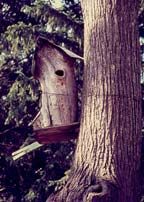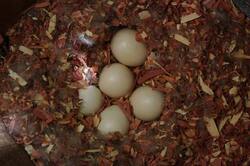Frederic Leopold, Wood Duck Expert
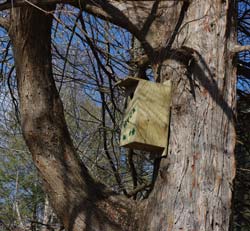
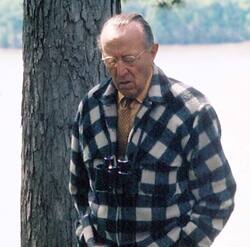
Wood ducks are cavity nesters in trees near rivers and lakes. In the early 20th century before hunting restrictions, they were an endangered species. Frederic said, "Wood ducks were subjected to double jeopardy because they nested here and were hunted year round." He recalled his father, Carl, had stopped spring shooting before game laws, and eventually ceased hunting the Woodies altogether.
In the spring of 2015 the Alliance began a small scale conservation project of re-establishing and monitoring wood duck nesting boxes on the Leopold property, a tradition begun by Fred many years earlier.
Aldo's younger brother, "Fritz" moved back into in the Leopold House at 111 Clay St, when he married Edith after his college and Army years. From about 1920 until 1989 he was the primary manager of the compound, assisting Mother Clara until her passing in 1948.
After the wood ducks began to make a slow comeback in the 1920's, Fred helped brother Aldo with monitoring in the 1930's. Aldo's student, Arthur Hawkins, started working on wood ducks for the Illinois Natural History Survey and was assisted by Fred in 1939 on studies at Crystal Lake Club in Illinois.
Art and Fred tried the new idea of using wood duck nesting boxes, with Fred inspecting and recording the "Woodies" activity on a daily basis. Hawkins designed the nesting boxes and the CCC built them. During Art's travels from southern Illinois to Wisconsin and back, he often stayed with Fred and Edith at the Leopold Boyhood Home.
It seems few knew if wood ducks would nest on tops of bluffs overlooking waterways. In 1943, with extra boxes on hand, Fred placed three boxes in the Leopold yard, and all three had successful hatches. Encouraged by the success of the first year, Fred went on to monitor about 20 boxes in the compound for decades. The intensive study discovered many new biological facts and behaviors of the Woodies, as well as important survey protocols to insure the natural nesting sequence was not disturbed. Because of his careful scientific collection of this data, Fred was awarded expert status on wood ducks in exactly the fashion described by Aldo in his essays "Natural History" and "A Man's Leisure Time". With the publication of Frederic's article in the Condor Magazine, 1951, "Fritz" became internationally recognized.
Keeping with the family tradition of reflecting and writing about the surprises and discoveries of a day's outing, Fred wrote:
"When returning to the nest, the incubating hen is followed in flight by her drake. She usually flies directly to her hole and immediately enters, in fact, she brakes so close to the box that it is surprising she can stop in time. The drake usually follows until close to the nest...Infrequently he may perch nearby momentarily before leaving. The beauty of the flashing drake as he swings by, having escorted his lady home, is a charming memory for a winter evening."
Fred presented slide talks to community meetings and visitors into the 1980's. School groups as well as elders were delighted to see the wood duck behavior. Photos of the ducklings jumping out of the nest hole and bouncing several inches off the ground, then being gathered together by Mother and waddling off down the bluff always fascinated the audience. Frederic was inducted into the Iowa Academy of Sciences who cited his efforts to "further the cause of harmony between man and the land". The duckling survival rate estimated from Fred's ratio of successful broods and migration to the river during the period 1943 to the late 1980's, accumulates to approximately 5,000 little Woodies making it from the Leopold compound down to the edge of the river.
Art Hawkins went on to play important roles in the US. Fish & Wildlife Service, and later he and mentor Aldo Leopold became FWS "Heroes of Conservation". Burlington's triple role in bringing the Woodies back is something we should celebrate.

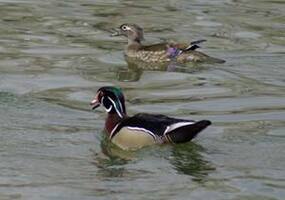
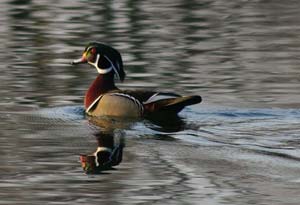
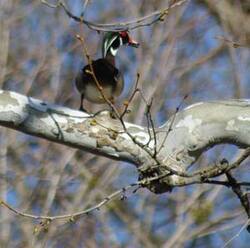 Male wood duck in a sycamore above Flint Creek at Starr's Cave, one of Aldo's tramping grounds.
Male wood duck in a sycamore above Flint Creek at Starr's Cave, one of Aldo's tramping grounds.